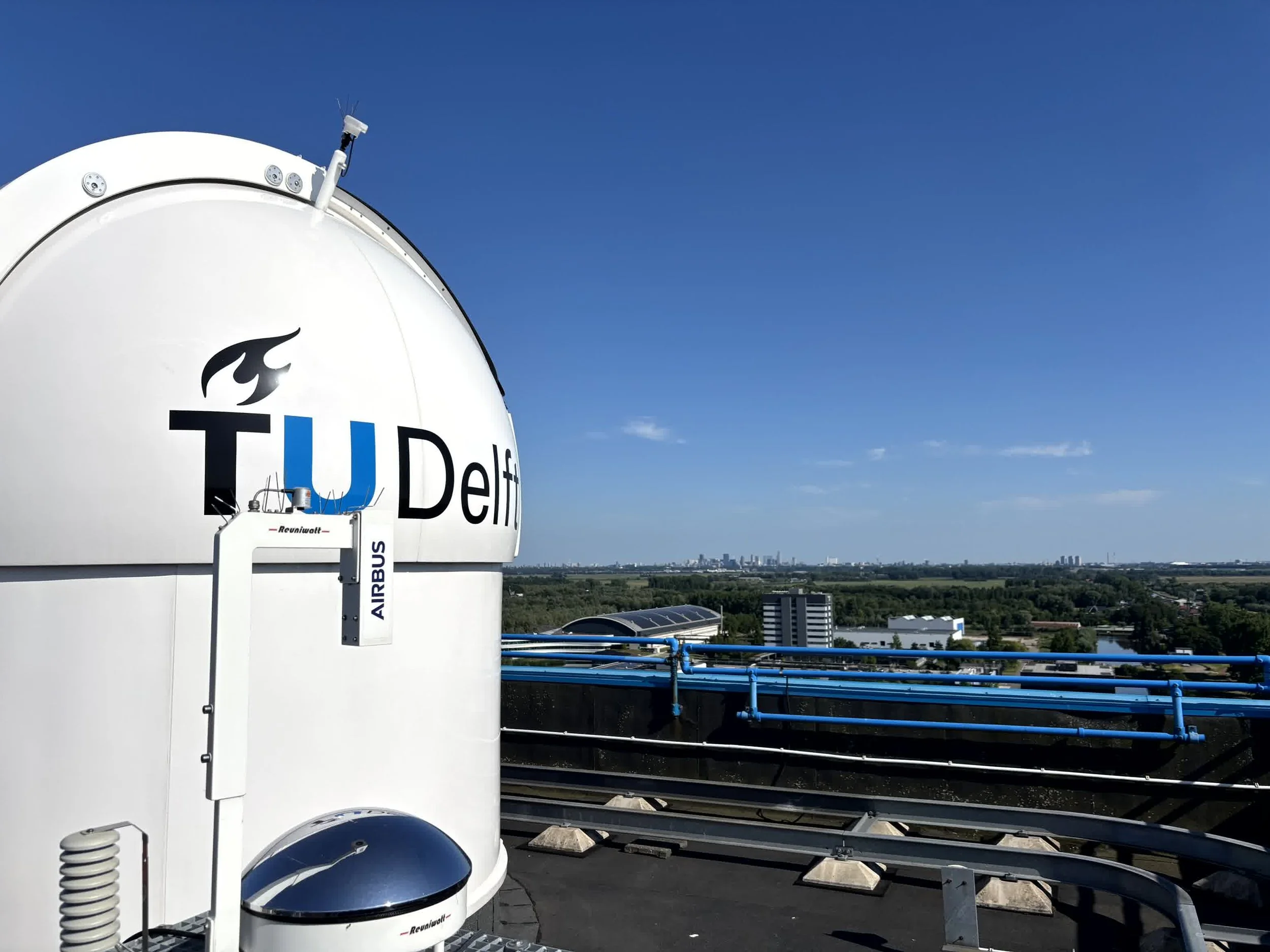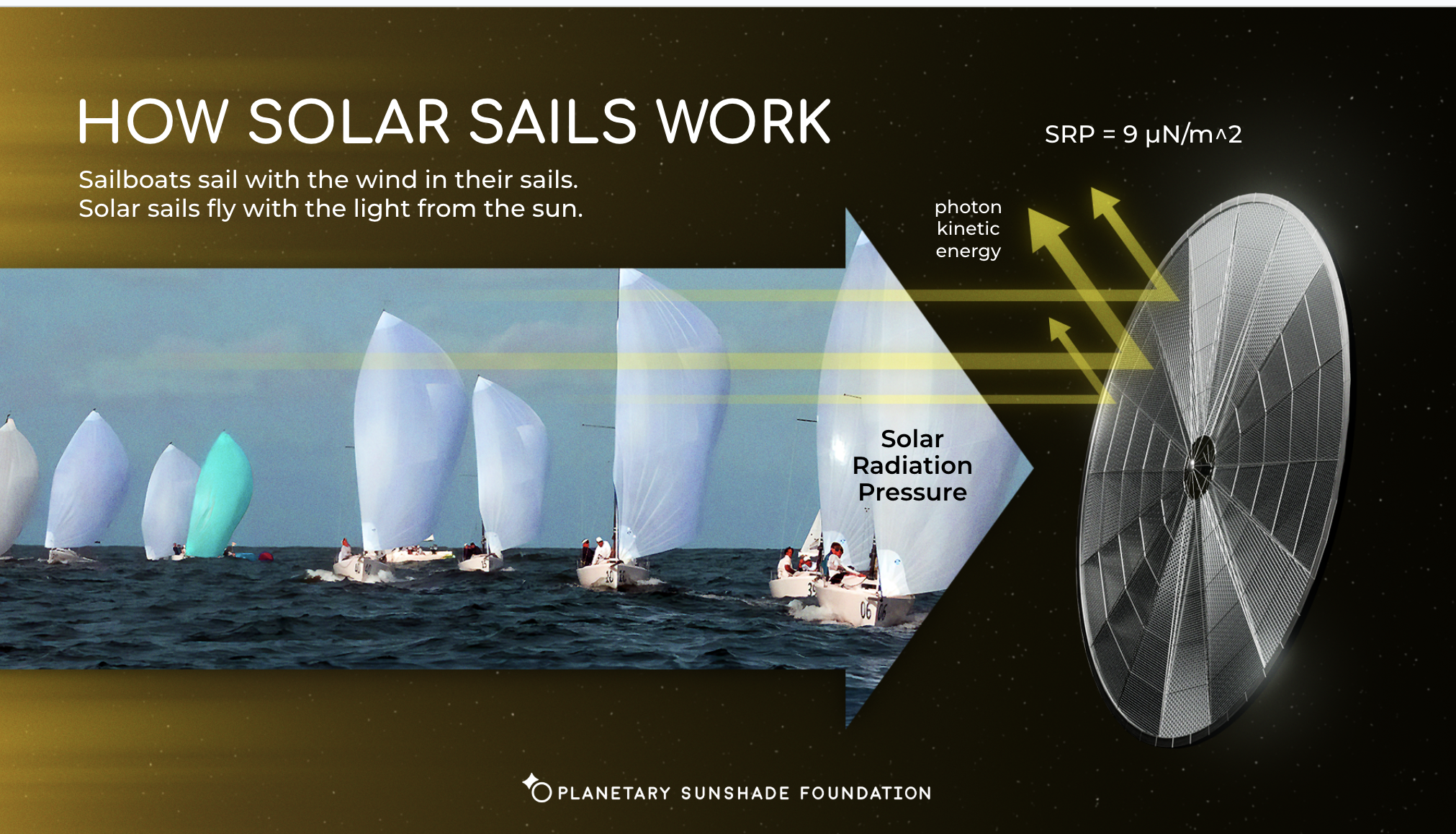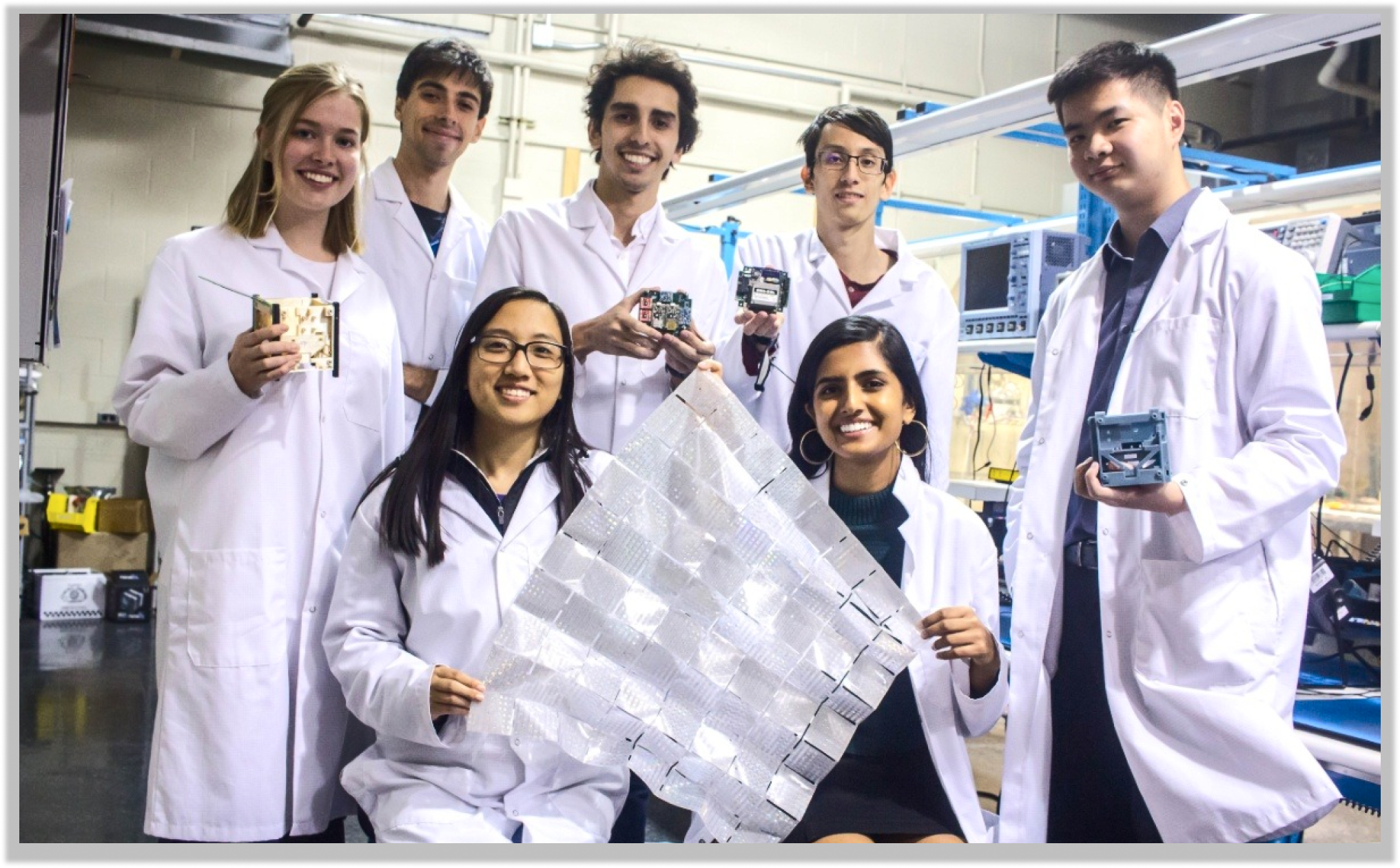International Solar Sailing Symposium
Our quest to understand the sunshade concept led us to the Delft Technological University in the Netherlands, to the gathering of solar sailing researchers.
Most of the ideas for how to build a sunshade are to construct very large solar sails, so this visit was critical to the mission and it paid off with dozens of connections and deeply insightful conversations. Indeed, almost a full day of the conference was dedicated to the sunshade concept - more on that below.
For those new to this work, solar sailing is when a spacecraft propels itself with a sail that catches the tiny momentum inherent in sunlight. This is thanks to the concept that photos have momentum but not mass,
Six solar sail missions have flown, demonstrating the principle. These have all been tiny demonstrations, and plans for larger missions have been cut. Space agencies say “Why trust a valuable scientific payload to a relatively new spacecraft concept when a tried and true thruster will get the job done?’’ However, some missions just aren’t possible with thrusters and sails remain a nascent technology area, ready to show off what they can do.
The solar sailing community is passionate about the potential of solar sails to fly unique missions. Here’s a taste of some of those missions and the people behind them:
We heard a lot about the Solar Cruiser mission, which would have been the largest solar sail to date - NASA cancelled it after building half of it due to budget concerns. Solar Cruiser wsa design to fly to Sun Earth L1, and then ‘raise it’s orbit’ to image the sun’s poles, something that would take a surprising amount of fuel or very timely planetary flybyws. We talked to Zachary from Redwire, the private contractor working on the spacecraft who was showing off a piece of the carbon fiber booms they developed. Check out one of the nerdiest t-shirts imaginable!
Keats Wilkie of NASA presented on the ACS3 mission, which is currently flying. Launched last year, they’ve had on and off issues with contacting the spacecraft, power supply, and control, but they are working through them, and Keats’ inspiring keynote address showed us the tenacity of not giving up on a mission.
Solar sails have been proposed as a means of sending interstellar missions. A Cornell team shared their work to build a tiny sail which would be accelerated with a massive laser (instead of just sunlight) to reach 20% the speed of light, potentially reaching Alpha Centauri in 20 years.
Two different groups are proposing sailing races, inspired by competitions like the America’s Cup. Solar Sprint will invite university teams to race their sails to Mars! The Earth Cup aims to accelerate sunshade technology by organizing a race to Sun Earth Lagrange 1.
More down to earth, dragsails are a form of solar sail intended to slow down spacecraft. These are being built by Gama Space to help satellite operators de-orbit their missions at the end of life, preventing dangerous space junk. Andrew Nutter, CEO of Gama Space is a big fan of the sunshade. He and several of his talented team attended.
Sunshade Focus
The organizers, led by symposium chair Jeannette Heiligers, organized a special session on the planetary sunshade concept. We heard from Prof. Herman Russchenberg, Professor in Atmospheric Remote Sensing at TU Delft about the stark urgency of the climate crisis and the possibility for interventions to reflect sunlight. Prof. Behnam Taebi, Professor of Energy & Climate Ethics at Delft gave us an excellent framework to navigate the ethics involved in geoengineering. And Prof. Mark Symes of Glasgow, but also the Programme Director for the ARIA grant through which we are funded, shared their commitment to doing small scale experiments.
Jeff Overbeek and Morgan Goodwin presented on the PSF's work for the ARIA grant. At the beginning of our talk, I asked the audience how many people had heard of the sunshade concept, and nearly all the hands went up. Then I asked how many had worked on the sunshade concept in some way, and a quarter of the hands went up again.
Jan Thimo Grundmann (on behalf of Tharshan Maheswaran), Fabienne Seibert and marina coco presented papers on their work to better understand a sunshade's possible functioning and dual uses. Daria Miyeko Marinelli facilitated connections between researchers with unlikely overlaps, and organized relationships to sustain the work ahead.
Advanced Concepts
Our ARIA grant also includes a study on diffractive sunshades. This concept works with the properties of solar radiation pressure to propose a much lighter, albeit more exotic material, could offer more shade for less mass. Diffractive solar sails have been studied by many in the community although no concept has ever flown. Being able to speak with virtually all the world’s experts on the topic was exactly the sort of value that our project needs if we are to advance the world’s understanding of what might be possible.
At the poster sessions, Jeff and Dean Zweiman presented our new ideas about a heliogyro concept for 40km diameter reflectors. (Stay tuned for more on this!) The heliogyro, a spin-stabilized solar sail design, was proposed for a Halley's Comet rendezvous mission in the late 1970s, but difficulties in testing meant the concept has never flown. Jeff and Dean were able to discuss the heliogyro concept with a few of the only researchers in the world who have worked on this.
Building Community
To cap off the week, PSF hosted a happy hour and we are calling this the largest gathering of sunshade researchers ever assembled! Morgan Goodwin thanked the 37 attendees for their research (many of whom are already working directly on the sunshade concept) and encouraged everyone to further efforts in the face of the climate crisis.
We were lucky to find a bar with a very large sunshade under which to gather. This was particularly important beacause of the heatwave over much of Europe this summer, driving home the urgency.
We were impressed with the depth of commitment by this community. Their thinking generally sounds like “If we can get just a couple of these missions funded to really demonstrate what sails can do, solar sailing could transform space exploration and other missions like the sunshade.” These are not expensive missions as far as space flight goes, and we believe a small investment from those working to stop climate change could make the difference here.







